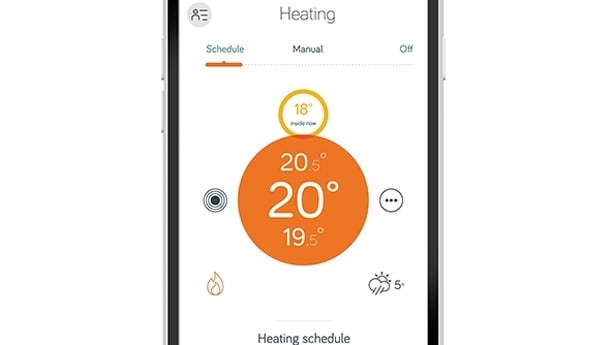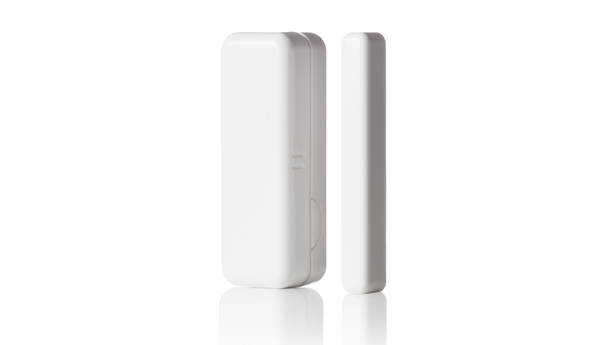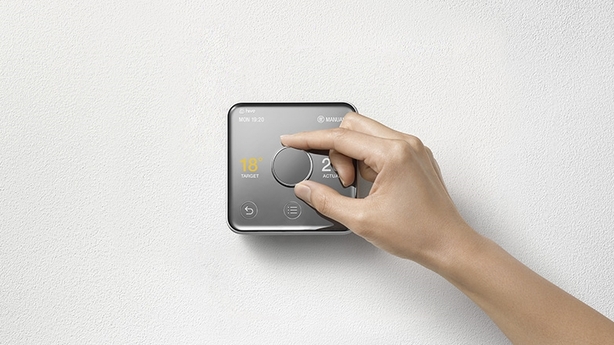By Will Goodbody, Science & Technology Correspondent
Smart home technology is still very much in its infancy.
But that doesn’t mean that the products that are available are all rubbish.
Equally though, it doesn’t mean they are all good.
And there are plenty of smart home devices out there already, even though it is early days.
One family of connected home gadgets that’s getting pushed in the Irish market right now is the Hive collection.
Owned by Centrica, Hive makes a selection of smart devices around heating, security and lighting.
The range is now available through Bord Gais Energy, also a Centrica company.
THE HUB
The Hive system is modular, meaning you can add on more and more devices as you wish.
At the centre of the system is the Hive Hub – the controller to which the individual devices connect and that you as user communicate with via an app in order to control them.
Set-up is pretty straightforward.
The Hub is plugged into your broadband router and to the mains electricity.
You then wait (a few minutes) for it to start up, settle and connect to the broadband.

THE APP
You must also download the Hive smartphone/tablet app in order to be able to control your devices.
It is available for iOS, Android and Windows, making it cross platform.
You can also control the gadgets connected to the Hub via the Hive website.
To do all this, however, you must set up a Hive account, which again is pretty straightforward.
The app is really slick - intuitive and easy to use, with a simple interface.
Once the app is installed and your account registered you are ready to go.
Next step is to connect up the devices.
HIVE ACTIVE LIGHT DIMMABLE
The first Hive device I added to the system was the dimmable light bulb.
I replaced a regular bulb in a lamp with it and turned the lamp on as per the instructions, following the steps on the app to pair the device to the Hub.
The Hub does this by scanning for any new devices and then gives you the option to add it to the system and give it a name.
Initially the Hub didn’t pick up the bulb. The lamp was upstairs and the Hub downstairs.
So I moved the lamp closer to the Hub and that did the trick.
It does suggest, however, that there may be range of issues with some of the Hive devices.
Once added, though, there was no problem. The bulb could be turned on and off, as well as dimmed and brightened from the app.
There is a slight lag between the time you make the change on the app and the time it takes effect on the light, but nothing particularly problematic.
You can also schedule the light to turn on and off at certain times of the day – handy if you are on holidays or if you arrive home at a set time of the day.
Hive also makes two other options where the temperature and colour of the light can be varied – although right now they can’t be bought in Ireland.
MOTION SENSOR
The next device I tried was the motion detection sensor.
Once again it can be installed pretty quickly by activating the battery and then searching for it using the installation function on the app.
It can either be left free-standing or stuck to a wall or other suitable surface in the area you want to monitor.
The default position on the app is for notification of movement to be set to off.
Once it is on, your phone will begin to ping every time the sensor is triggered.
Thankfully if someone is milling around the area where the sensor is, it will only notify you once until it detects no motion again for a unspecified period – seems to be a couple of minutes – at which point it resumes the alerts.
The notifications do, however, become a little irritating when there is someone who should be in the house moving around regularly.
At this point you probably will want to turn the notifications off.
On the app you can also look back through the day and previous days to see when there was motion recorded.
The sensor itself has a green light on it which flashes when motion is detected.

WINDOW DOOR SENSOR
Hive also sells window and door sensors, which work in much the same way.
They can be easily added to the Hub and alert you via the app when a door or window is opened or closed.
Like the motion sensors they are battery powered.
This is a necessity as it isn’t practical to power them from the mains.
The draw on the battery should be low.
Nevertheless, you will find you will have to replace them periodically.
HIVE ACTIVE PLUG
The final product I road tested was the Hive Active Plug.
This does exactly what it says it does. You plug it into a socket, turn the socket on, pair the device with the Hive Hub and then you can use it to turn on and off anything that’s plugged into the socket.
That could be a lamp – although the Active Light will in effect do the same job.
Another potential use example that Hive gives is the ability to check whether or not you turned off your hair straightener after you leave the house.
For those of us who don’t have a hair straightener, potentially you could leave the kettle filled and switched on before leaving the house and start it boiling as you near home at the end of the day.
So there are uses, although I think remote controlling and scheduling a lamp is probably the strongest.
As well as being able to remotely control the Active Plug via the app, you can also set a schedule for it to come on and off.
ACTIONS
The Hive system also has If This Then That (IFTTT) technology built in.
In simple terms this allows the user to set up a chain of events, where one action follows another.
So in the case of the motion sensor for example, the app can be used to set up a series of actions where when the motion sensor is triggered an Active Light comes on.
You could also set the kettle boiling as soon as you open the front door.
You get the idea.
Quite handy and as the Hive family grows and potentially becomes connected to devices outside of that family, the usefulness rises.

HIVE ACTIVE HEATING
Arguably the centrepiece of the Hive system is the Active Heating controller.
It lets you control your heating and hot water from your smartphone.
You can also set schedules, but unlike other thermostat systems such as Nest’s, it doesn’t learn your behaviour.
Up to three heating zones can be supported with the basic set-up, although more can be added for an additional charge.
You can also link it via Actions to a sensor, so that when you come into the house for example the heating comes on automatically.
I wasn’t in a position to trial this system right now, but hope to in the future and will review it when I do.
CONCLUSION
Smart Home products are going to become two a penny and already there is quite a choice available.
From well known product manufacturers like Nest, Philips, Honeywell and Belkin to the fast growing Samsung SmartThings and Apple HomeKit ecosystems, the market is fast becoming crowded.
To succeed therefore products will have to be very good.
The Hive ecosystem sets the bar at a decent height, with a standard that others will have to match.
The products are simple but effective, the app easy to navigate and use.
Alongside ease of use, cost will be a key differentiator and among the existing competition the Hive products benchmark well.
The Hive suite of offerings will need to grow and functionality develop.
But if you are looking to make your home a little bit smarter, this could be the clever choice.
Comments welcome via Twitter to @willgoodbody

